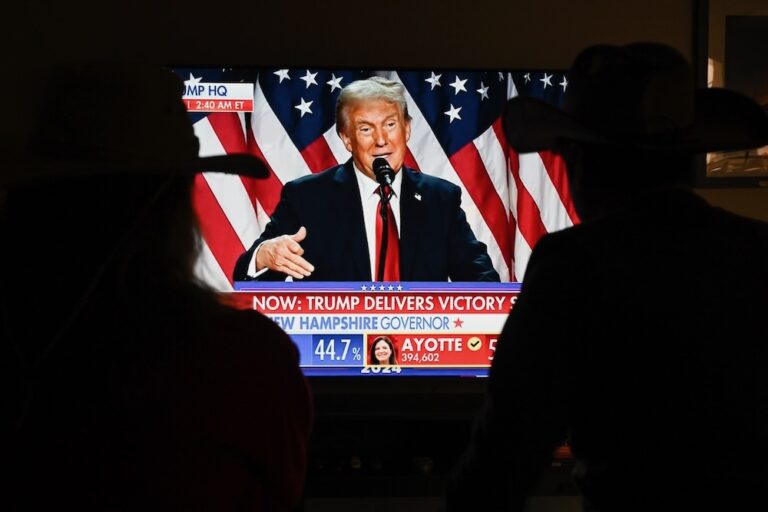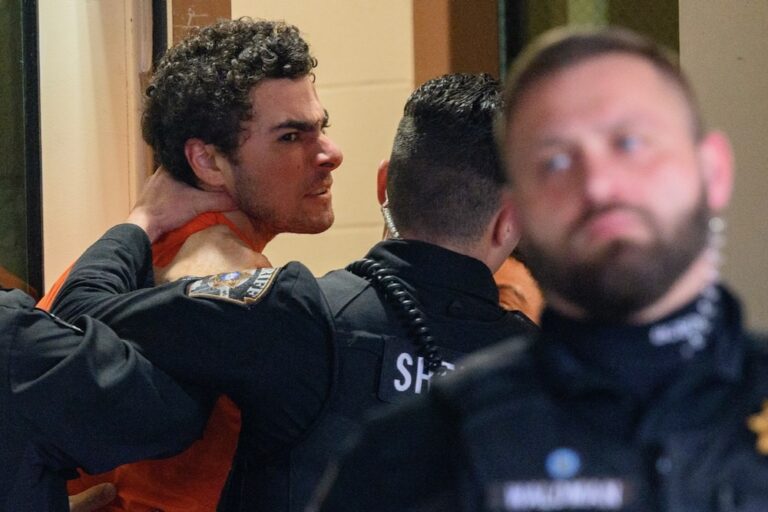**For background information on the Luxembourg case, see IFEX alerts of 6 and 2 June 2000** (CPJ/IFEX) – The following is a 15 June 2000 CPJ press release: CPJ CONCERNED ABOUT SECOND INCIDENT OF POLICE POSING AS JOURNALISTS IN HOSTAGE CRISIS New York, June 15, 2000 — The Committee to Protect Journalists is deeply concerned […]
**For background information on the Luxembourg case, see IFEX alerts of 6 and 2 June 2000**
(CPJ/IFEX) – The following is a 15 June 2000 CPJ press release:
CPJ CONCERNED ABOUT SECOND INCIDENT OF POLICE POSING AS JOURNALISTS IN HOSTAGE CRISIS
New York, June 15, 2000 — The Committee to Protect Journalists is deeply concerned about a second incident in less than two weeks in which police commandeered a television news camera and posed as journalists to settle a hostage crisis.
On Tuesday, June 13, police in Newark, New Jersey, seized a New Jersey Network (NJN) news crew’s video camera when an alleged hostage-taker demanded that he be interviewed on television. Ali Kemoun had allegedly killed his wife and mother-in-law and was holding his nine-year-old son hostage in his house when he made the demand.
The Newark incident came less than two weeks after a similar case in Luxembourg, where police on June 1 commandeered a camera from a local TV station. In the Luxembourg case, police led a gunman to believe that he would be allowed to give an interview to a television crew. They then took the camera, hid a gun inside it and gave it to a police marksman, who posed as a cameraman and used the hidden gun to shoot the hostage-taker.
“Such actions compromise the perceived independence of all journalists and increase the risks they face daily in covering dangerous news stories,” said Ann Cooper, executive director of the Committee to Protect Journalists (CPJ).
According to news accounts of the Newark incident, the police told an NJN cameraman, “We need your camera.” A police officer then entered the house in a ruse designed to distract the hostage-taker by conducting an interview. News reports said the actual camera taken into the house was not the one that belonged to NJN; police reportedly substituted a Newark fire department camera just before starting the bogus interview. Police returned the first camera to NJN two hours after taking it.
As part of the agreement to appear on camera, Kemoum released his son before beginning the interview. But he quickly realized the cameraman was a police officer and not a member of the media and ran to an upper floor of his house. Newark police kept the tape that had been in the NJN camera, for a full day, claiming it as evidence, then returned it.
News reports say Newark Mayor Sharpe James “apologized for the confiscation” but reportedly said police thought it was necessary to pose as reporters to “prevent [the hostage-taker] from doing anything drastic.”
After the incident in Luxembourg, CPJ issued a statement urging law enforcement organizations to consider the dangers they may create for legitimate journalists by posing as reporters and cameramen, even with the goal of saving lives.
Cooper added today, “While we understand that police often find themselves in desperate situations, and that some law experts believe the confiscation of a camera in such a situation is legal, we hope this disturbing tactic does not become a trend. Once again, we urge law enforcement agencies to consider carefully that these actions might very well serve to target journalists. We hope alternative tactics will be used that don’t place journalists at risk.”
The complete text of CPJ’s response to the Luxembourg situation can be found at .
For more information on journalists in danger, including a 1996 special report on the CIA’s history of supplying intelligence operatives with fraudulent journalism credentials, visit the CPJ Web site at .
CPJ is a New York-based, independent, nonprofit organization that works to safeguard press freedom around the world.


